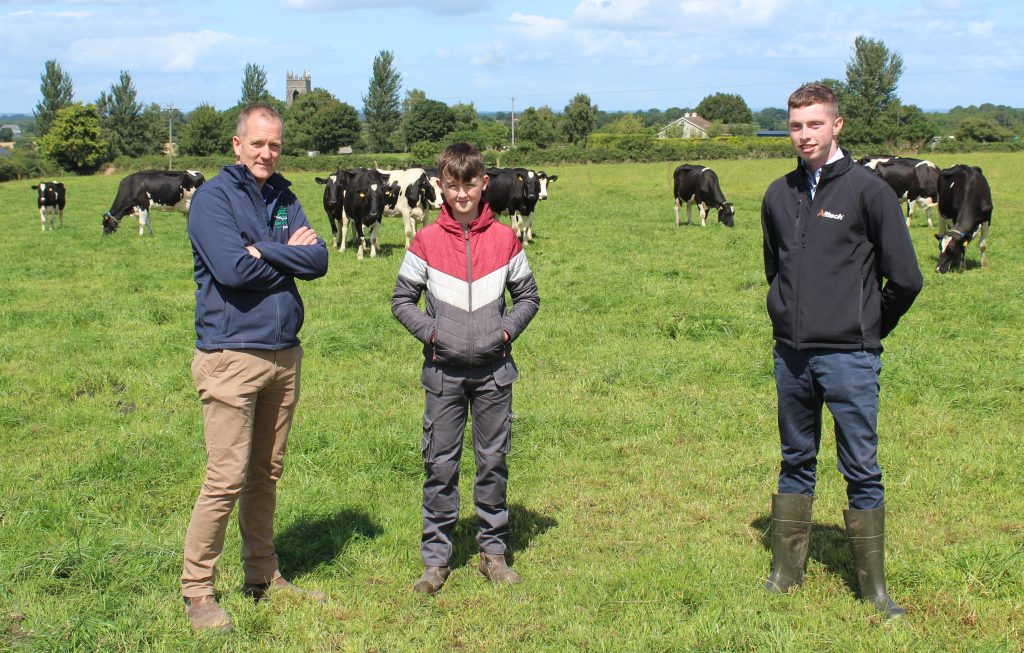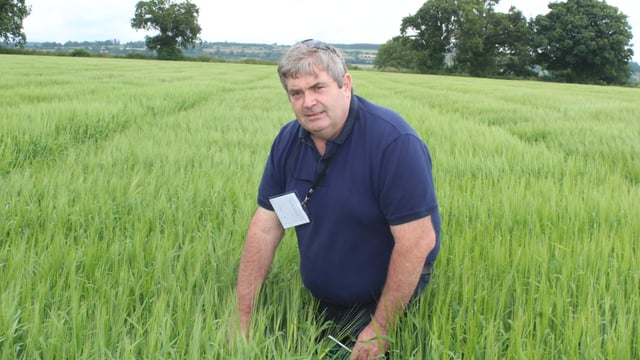Sponsored Article
The changing landscape of Irish farming
Sponsored Article

Farming in Ireland is experiencing a period of profound change. Historically, Irish farms have been celebrated for their efficiency, commitment to animal welfare, and focus on sustainability.
These strengths remain central, but increased scrutiny from regulators, consumers, and the wider public is driving a renewed determination to improve standards and adapt to new challenges.
One of the most notable shifts is the evolution of the traditional family farm into a more business-orientated enterprise.
Over the past two decades, the average number of cows per farm, the size of farms, and the labour required have all doubled - while the total number of farms has halved.
This consolidation means that farms are larger and more productive, but also more exposed to risks such as extreme weather events and volatile international markets.
Fluctuating prices and costs are now a fact of life, and farmers must be agile in their response.
Rather than abandoning grass-based systems, they are seeking ways to adapt and protect themselves from external risks.
Maximising grass growth and utilisation continues to be the cornerstone of Irish dairy farming, underpinning both productivity and sustainability.
A key concern is maintaining and even increasing milk solids output, in a lot of cases with reduced cow numbers.
Nutrition and supplementation: Common pitfalls
In many situations, the milk solids (MS) are already there but from a nutritionist’s perspective, there are three common mistakes that lead to significant losses in MS per cow each year - often between 30-50kg:
- Underfeeding cows in the spring when their nutritional needs are high;
- Overfeeding cows in the summer, which can lead to inefficiencies and wasted resources;
- Failing to provide supplements when feed shortages arise, resulting in cows not reaching their full production and fertility potential.
Many cows capable of peaking at 27-30L per day never achieve their annual yield targets of 6,100-6,800L.
This shortfall is a direct consequence of not addressing feed pockets and failing to match supplementation to the cow’s requirements - which is why an adaptable feeding system is crucial.
Towards a balanced and resilient system
The goal for modern Irish farms is to maximise grass utilisation and milk solids while feeding cows according to their needs, without resorting to excessive concentrate use.
Diet feeding is increasingly recognised as the missing piece for many farms. It offers a way to make systems more resilient to risk and unlock extra productivity.
While some farmers view diet feeding as complicated or unsuitable for grass-based systems, the experience of KEENAN’s 3,000 Irish customers shows otherwise.
The vast majority remain grass-based, using straightforward systems that combine grass silage, straw, and a single concentrate for milkers, dry cows, or youngstock.
They are also better able to react to changes or events throughout the year.
Take Damien Moore, a dairy farmer from Co. Kildare, for example, who said, “The KEENAN has allowed us to stretch our silage stocks for an additional six weeks.”
The following table compares key performance indicators across three farm models, with the group that utilised KEENAN diet feeders in addition to traditional grazing saw higher milk yield and solids while maximising forage usage.
| Ireland Average | KEENAN Group | Teagasc Roadmap 2027 | |
| Milk Yield (kg/cow) | 5,484 | 6,000 | 5,750 |
| Milk Solids (kg/cow) | 417 | 471 | 465 |
| Forage Utilised (t DM/ha) | 9.3 | 10.2 | 8.9 |
| 6 wk. Calving (%) | 68 | 72 | 78 |
| Concentrate (t/cow fresh) | 1.3 | 1.1 | 0.9 |
PJ and Padraig Kileen saw similar production gains in their dairy herd.
They said: “More of our early-calving cows were able to take full advantage of the early spring grass, over three seasons working with the KEENAN we’ve seen a 65kg increase in milk solids.”
Practical steps for success
Precision and measurement are key. A recent survey of 1,213 farms found that every 1% feeding inaccuracy costs each farm €2,528, with some farms running at over 20% inaccuracy.
Feed wastage is a major inefficiency: a UK survey showed that for every £3 spent on feed, £1 is wasted.
Accurate and measured feeding reduces wastage, avoids substitution and ensures optimal grass utilisation.
As John Coakley from Maynooth, Co. Kildare, explained: “With the InTouch controller, our mixes stay consistent no matter who’s driving, our milk solids are up, and fuel use is down.”
Embracing change and building resilience
Diet feeding, when used correctly, does not require a fundamental change in farming systems - just a simple adjustment.
With proper measurement and nutrition programs, farms can increase productivity and reduce risk.
The support of nutrition advisers and the use of measurement tools are critical to achieving these gains.
John Gill, a Co. Offaly dairy farmer, attributes much of his herd's strong milking performance to KEENAN and InTouch.
He said: “Since we started working with InTouch, we are feeding less protein and have seen an increase of 32kg in milk solids.”
The future of Irish farming depends on embracing change through sustainable innovation, precision nutrition, and efficient grass-based systems to build resilience and productivity in a changing world.
At Alltech and KEENAN, that future means delivering smarter options for grass-based systems.
Watch the video below and discover why thousands of Irish farmers trust KEENAN to power more efficient, resilient, grass-based systems.
Sponsored Article






